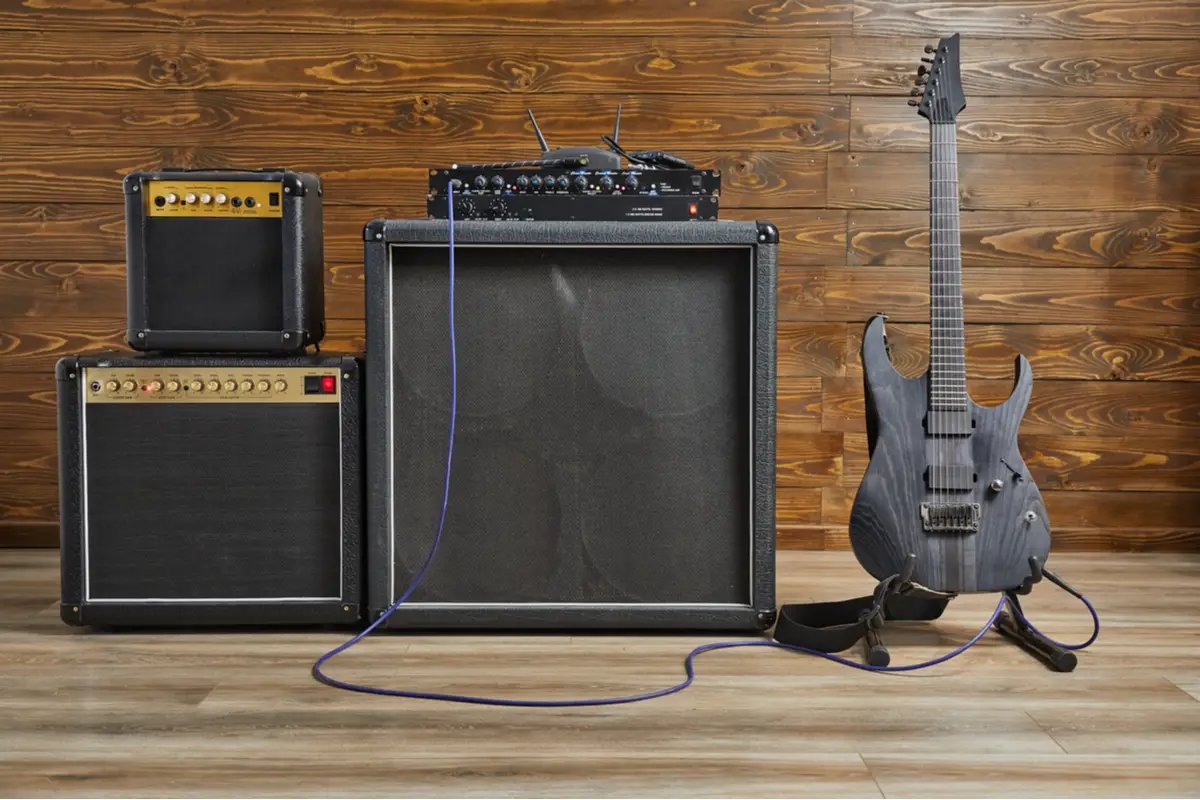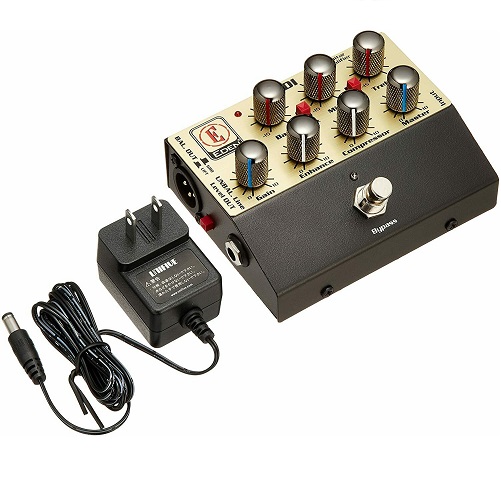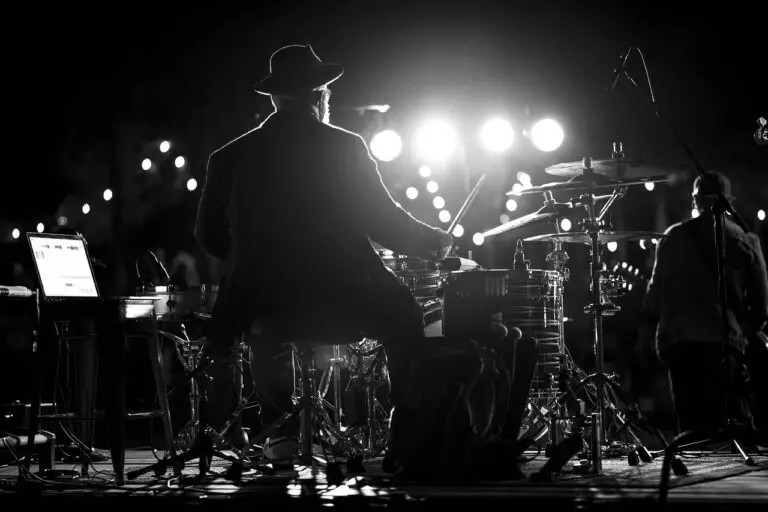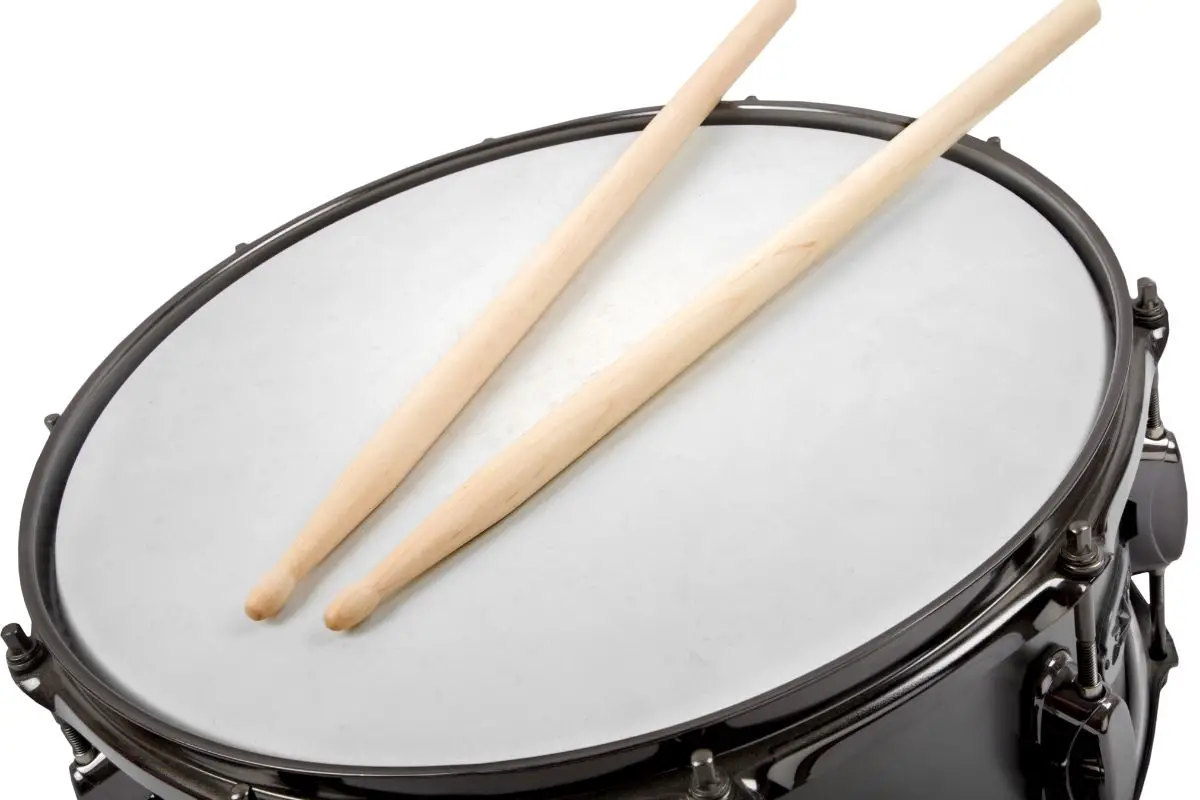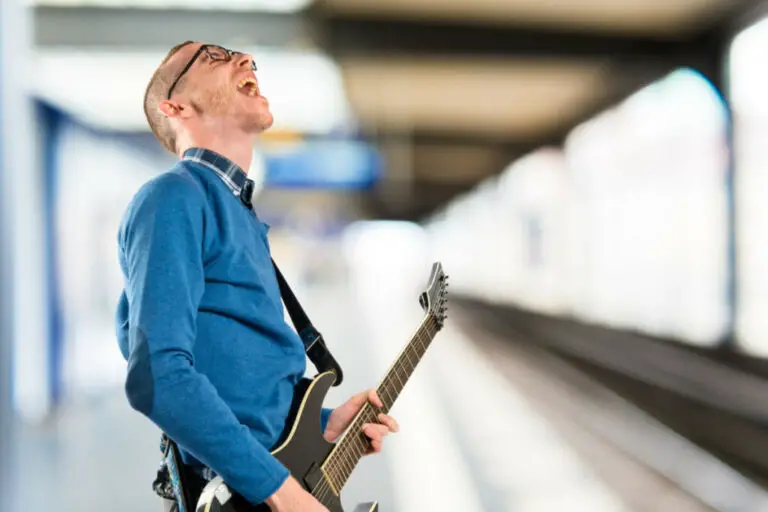The Best Bass Preamp for All Budgets
Are you a regular bass player? Are you tiring of hearing the same flat tone repeatedly during practice? It may be time to shake things up a bit.
If you’re not sure where to start, why not consider a bass preamp? A preamp has the power to boost your signal and shape your tone before it hits your amplifier. The result? More tonal quality than ever before.
Unfortunately, if you’re not an experienced player or you know little about preamps, you may not know what to pick. From big names and technical jargon to compact designs and larger setups, the list is endless.
Thankfully, we’ve put together this guide of some of the best bass preamps on the market.
So, if you’re ready to take the hassle out of research time, look through our roundup and buyer’s guide to help you find the right preamp for your bass.
Best Bass Preamps (Quick Summary)
1. Jim Dunlop MXR M81 Bass Preamp
- Separate INPUT & OUTPUT level controls
- 3-band EQ section with sweep able midrange
- Studio-quality Direct Out
- Model Number: M81
Let’s start with the Jim Dunlop MR M81 Bass Preamp. This bass preamp weighs a modest 0.7 pounds and comes in a humble olive green color.
This preamp includes a three-band EQ section with a sweepable midrange, individual input and output level controls, and separate controls, including:
- Mid Frequency
- Bass
- Treble
The amp impressed us with the sheer range of tonal changes delivered by such a small amp. If you’re not a fan of fuzz and overdrive but need a clean, powerful bass sound for your music, this is the one for you.
This preamp may be simple, but it’s powerful. The sweepable mid allows you to isolate the exact frequency you want to either cut or boost, and it doesn’t change the character of your actual bass amp.
This amp can run on either phantom power, an A/C adapter, or a battery, and with a ton of headroom, you can direct this into a power amp if you need it.
This amp does a great job of creating a clean, quiet, and punchy sound. We think this amp suits a range of players, but it would be great for those who love playing slap-style bass lines.
The only downside to this amp is a lack of EQ variations, and it doesn’t give much of a boost to your tone. We also found the LED indicator obnoxiously bright, which can distract you when playing.
Pros
- Sweepable Mids: So you can isolate the exact frequency you want to work with.
- Simple Interface: This amp is powerful but incredibly easy to use – this is ideal for beginner players.
- Clear and Punchy Tone: This suits a range of players but creates an appealing tone for slap-bass players.
Cons
- Super Bright LED: This can distract you when trying to play.
- Lack of EQ Variations: This may not suit more advanced players looking for more control.
2. NUX NBP-5 Bass Preamp
- A bass guitar preamp, DI box, impulse response (IR) loader and audio interface for practicing, gigging and recording in the box.
- 3-Band Equalizer with Middle Frequency Selector.
- Drive with blend control.
- Built-in noise reduction. XLR DI output.
- Micro B USB input for firmware update, software control, IR loading, and audio stream
Next on our list is the NUX NBP-5 Dual Switch Bass Preamp. This preamp is also a DI Box, impulse response loader, and an audio interface for practice sessions, gigs, and box recordings.
This preamp also includes a three-band equalizer and middle-frequency selector, giving you more control than ever over your sound. The controls on this preamp include:
- Volume
- Blend
- Drive
- Bass
- Middle
- Frequency
- Treble
When we tested this preamp, we found the built-in noise reduction did a great job of improving our tone and keeping things clean.
With sweepable mid-range frequencies and bass and treble controls, this preamp has such wide frequency control it would suit anything from a four to seven-string bass.
This preamp is ideal for fine-tuning your tone or output, and you can play with the blend between your clean and overdrive signals.
You can use either the main “out” or “through” outputs to create a drier signal for your bass. For example, if you use the “Out IR” feature, you can link your pedal up to any FRFR speaker or attach it directly to an audio output or mixer. Best of all, there’s even a headphone output on the left side of the pedal so you can play in peace.
Unfortunately, we felt that the preamps software was glitchy and laggy during testing.
Getting the preamp to interface to computers such as a MacBook was challenging, and getting in touch with tech support for guidance was tough.
Pros
- Noise Reduction: You can clean up your tone and reduce humming directly from your preamp.
- Headphone Jack: So you can play either out loud or quietly to yourself.
- Plenty of Controls: This preamp has controls like blend, drive, and treble, so you can create a variety of tones to suit almost any player.
Cons
- Glitchy Software: We found the preamps software was laggy and glitchy, which reduced the quality of our playing experience.
3. Eden WTDI Bass Preamp
Hungry for more? Let’s look at the Eden WTDI Bass Preamp. The Eden WTDI Bass Preamp delivers outstanding tonal quality despite its compact form.
This preamp comes with an impressive seven knobs and vast functionality. You’ll have plenty of tools to sculpt, shape, and play with your sound however you want.
This preamp features three-band EQ controls so you can move between clear high tones, incredible mid frequencies, and a powerfully deep bass tone.
It also includes a compression knob that gives you the power to tighten up your sound whenever you need to.
You can use the bass boost function to create a consistent and well-rounded tone even when playing at low volumes.
The powerful DI output eliminated the need to use an external amplifier to create powerful bass tones. You can even rush it into a mixer or DAW for additional clarity.
This preamp can also function as either a preamp, a power amp, or even a pedal board. Despite its small size, the WTDI is an all-in-one solution.
Its tailored EQ also adds low, mid, and high frequencies, so you can create every tone imaginable, from gritty growls to clean high tones.
During testing, the major drawback we found was with the 15v output. Although this pedal comes with a dedicated power supply, there are few multi-power supplies out there that support 15v.
If you want to run this pedal through a multi-power supply with other pedals, you won’t be able to do this, as Eden does not advise it.
Pros
- Impressive Tonal Range: You can create almost any tone with the Eden preamp, which makes this a superb choice for almost all bass players.
- Multi-Function Design: You can also use this preamp as a power amp or even a pedal board.
- Compression Knob: The compression knob on the Eden preamp is impressive. It’s powerful and creates a truly clean tone.
Cons
- 15v Output: Unfortunately, the 15v output can make it difficult to play multiple pedals through a multi-power supply. However, if you’re only planning to use this pedal, this won’t be a problem.
4. Behringer BDI21 V-Tone Bass Preamp
- Behringer BDI21 V-Tone Bass Driver DI Box – (9V Battery and PSU-SB DC Power Supply Not Included) – Adorama 1 Year Limited Warranty
- Analog modeling bass preamp/stompbox with DI recording output
- This Behringer product has been designed to compete head to head with leading products on the market
- Authentic V-TONE modeling technology capable of dialing up big vintage tube tones, funky slap sounds, crunchy distortions and all in between
- Provides a truckload of great amps in a single stomp box-from traditional bass amps to modern overdriven amp tones that would typically require a multitude of effects units
Next up, it’s time to check out the Behringer BDI21 Bass Preamp.
The Behringer Bass Preamp is an analog modeling preamp/stompbox with a DI recording output.
The Behringer preamp has the power to create a multitude of tones, from vintage tube sounds, powerful distortions for your bass, and slap bass sounds.
Its stompbox design is also incredibly efficient for live performers looking for a more ‘hands off’ approach to the playing experience.
This preamp also has a dual DI mode to use with either your direct recording output with tube emulation or an active injection box used in bypass mode.
When we tested this preamp, we loved its proprietary tube emulation circuitry the most. This is the equivalent of having a tube amp at your feet, giving us more control over our tone than most other preamps.
The ground lift switch also erases any loop hum problems. You can power the Behringer preamp with either a 9V battery or the Behringer power supply (not included with the preamp).
Ultimately, the Behringer preamp provides a vast range of studio-quality tones suitable for live players and amateurs.
The presence knob adds a lot of grit and thickness to your tone, and the boost, bass, treble give you unparalleled tonal quality.
Unfortunately, the only downside to this preamp is that it’s always on. So if you leave the battery inside the preamp, it will remain switched on, which can drain quickly.
Pros
- Powerful Circuitry: Proprietary tube emulation circuitry feels like having a tube amp at your feet.
- Stompbox Design: The Behringer preamp stompbox design gives you a hands-off approach to playing, which is convenient for live performances.
- Incredible Tonal Quality: You can create vintage tones, distortions, and slap bass sounds.
Cons
- ‘Always On’: Unfortunately, if you keep a battery inside the Behringer preamp, it remains on. This can drain your battery fast.
5. Palmer Pocket Bass Preamp
- Product type: Guitar Amplifiers
- Made in German
Last, let’s finish things off with the Palmer pocket bass preamp. As the name suggests, this preamp is incredibly portable and weighs a tiny 0.4 kilograms.
Despite being one of the smallest preamps on our list, the Palmer pocket preamp definitely doesn’t lack power.
This preamp has a range of controls, including:
- Bass
- Level
- Frequency
- Highs
- Drive
- Blend
- Saturate
- Volume
These make the Behringer preamp perfect for practice sessions, recording and gigging. It also comes with a three-band EQ, clean, overdrive, and fuzz modes, and the blend control means you can mix your direct and affected signals.
You’ll also have an insert dedicated to external effects and a headphone input to practice away in peace. This preamp works with almost any bass rig, power amp, headphone amp, and mixing desk.
We loved the EQ and distortion sounds. These sound warm and are reminiscent of a traditional tube amp sound.
If you want something powerful enough for live performances but small and powerful enough to carry around and practice portably with, the Behringer preamp isn’t one to miss.
Unfortunately, the only issue we found with this preamp was that it could create a slight hum and buzz. You can resolve this if you unplug the power supply from the DI and wait a short while.
However, it seems to be a repetitive problem that there’s no permanent fix for.
Pros
- Compact Size: Perfect for quiet practice sessions and live gigs alike.
- Multiple Tonal Effects: This is ideal for those who enjoy playing a range of styles.
- Clean EQ and Distortion: These sound similar to tube amp sounds and are incredibly warm, clear, and powerful.
Cons
- Humming and buzzing: Unfortunately, this preamp is susceptible to humming and buzzing when it’s first plugged in. You can resolve this by unplugging the preamp and waiting, but there’s no permanent fix to prevent it.
Bass Preamp Buyers Guide
If you’ve made it through our roundup, you should now have a clear idea of some of the best bass preamps on the market.
However, if you’re still not sure what you’re looking for and you’re struggling to commit to a purchase, take some time to look through our buyer’s guide.
We’ll walk you through the most important features of a bass preamp and tell you everything you need to know before investing in a new piece.
What do you achieve by using a bass preamp?
Before we launch headfirst into specifications and technical jargon, let’s take things back to basics. What exactly will you achieve by using a bass preamp?
If you’re not sure exactly why you need a bass preamp, there are two main reasons: tone and electronics. Let’s inspect these below.
One of the main reasons for using a preamp is to achieve your desired tone.
If you’re feeling tired of the sound of your bass and want to shake things up a bit, a preamp can offer a versatile way to tweak specific frequencies such as bass and less mid, giving you plenty of tonal control.
The other reason for using a preamp is to work on your electronics and tweak your current setup.
If you’ve encountered some electronic issues with your current setup, or you fear something may malfunction, trying a new preamp can resolve the issue.
How does battery voltage impact my bass preamp?
One important thing to consider is battery voltage. Most preamps use a standard 9-volt battery. However, some circuits will use two 9 volt batteries (to make 18 volts).
So, is there a difference between a 9 volt and an 18 volt?
The answer is yes, but it’s nothing drastic. If you’re using an 18v preamp, you may notice a better signal-to-noise ratio. You’ll notice far less distortion, especially when boosting the signal of your bass or treble.
However, if you’ve been using a 9v preamp, you probably won’t notice too much of a difference.
The difference between active and passive switching in your preamp
Here are a few terms you may have heard of before: active and passive switching. If you’re wondering what the difference is, let us talk you through it.
The active/passive switch is an independent switch, usually seen by the volume button, that will route the signal either directly through the preamp or bypass it.
The active/passive switch will allow you to control the blend of your pickups (if you’re using a bass with over one) and your volumes, but you’ll have no tone controls.
This may seem a little unnecessary if you’re only planning to use your preamp in passive mode. However, there are still a few benefits.
If you’re encountering some unexpected battery death mid-gig, you’ll have the option to bypass the preamp, engage that bypass, and carry on playing until you change the battery.
You can even just leave your bass in passive mode until you’re able to change up.
Engineers also prefer the active/passive switch. However, many engineers prefer to work with a flat signal, so you can adjust it in the mixing process later.
Final Thoughts
Whether you’re recording, playing live, or practicing at home, a bass preamp can give you incredible tonal quality and allow you to find the exact sound you’re looking for.
If you’re fed up with a thin or flat-sounding bass, consider adding a preamp unit to your setup.
Not to mention, the right preamp can supplement or even replace your amp altogether. You don’t need to be a tech guru to use one, either.
Thankfully, many modern preamps have compact designs and easy-to-use interfaces, so achieving your dream tone is easier than ever.
Frequently Asked Questions
What Is The Point Of A Bass Preamp?
A bass preamp has two main purposes: to shape your tone and boost your signal before it reaches your amp. Using a preamp can add a more diverse and vibrant tone to your instrument and avoid flat signals.
Do I Need A Preamp For Recording Bass?
Preamps aren’t necessary for recording bass; however, they can give you a clean signal you can shape later in the mixing process to achieve your desired tone.
Can I Record Bass Without An Amp?
You don’t need to use an amplifier to record your bass. You can record by plugging your bass directly and then using EQ and Effects to tweak your tone afterward.

